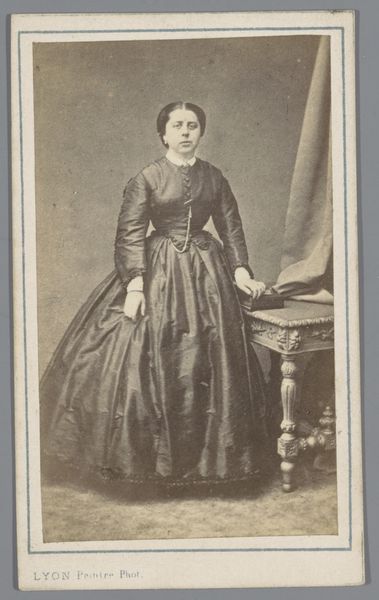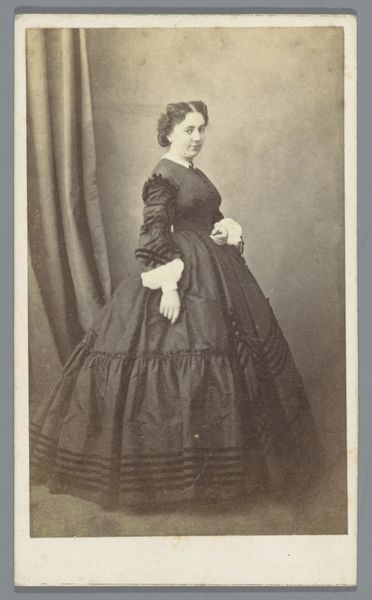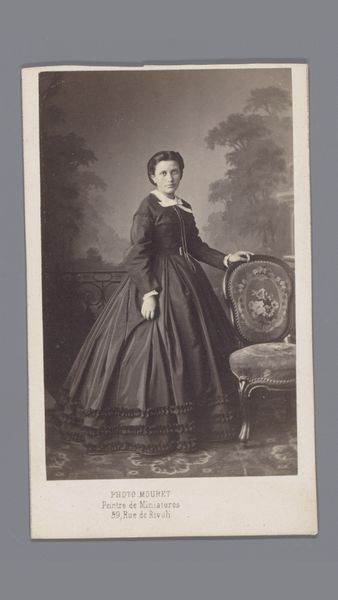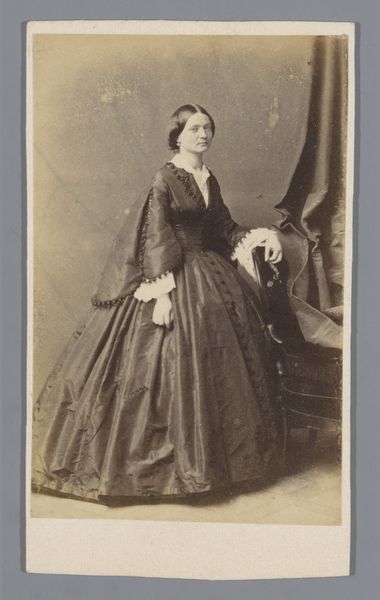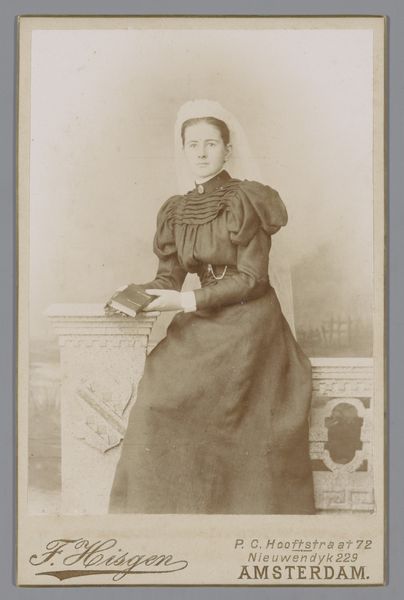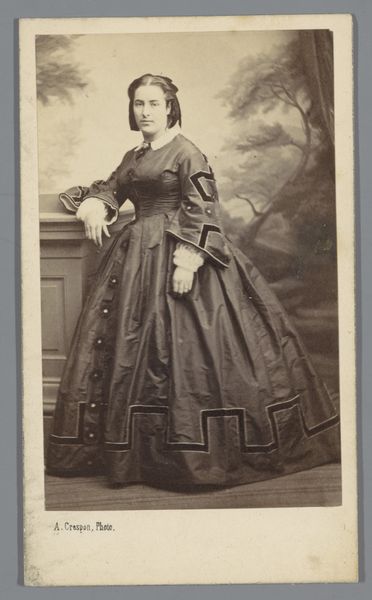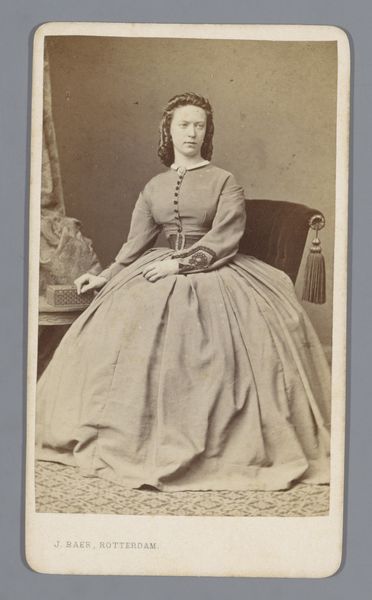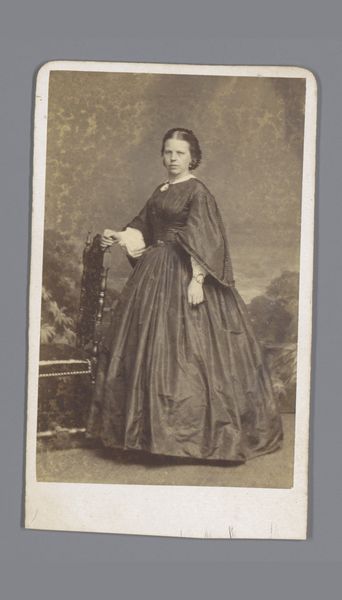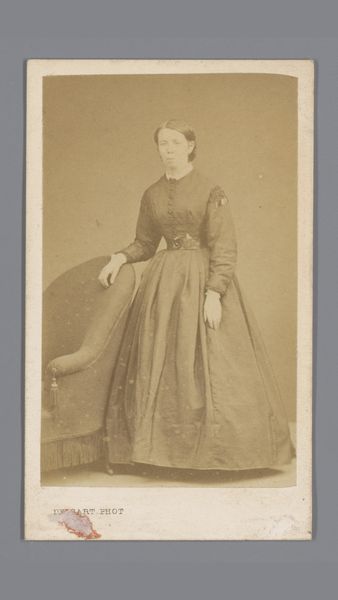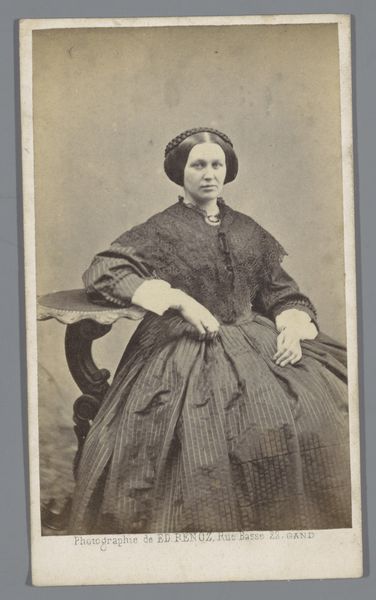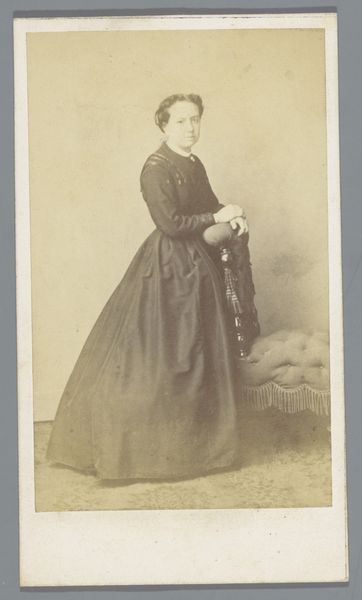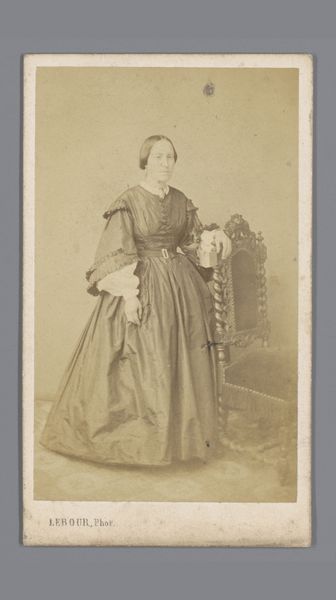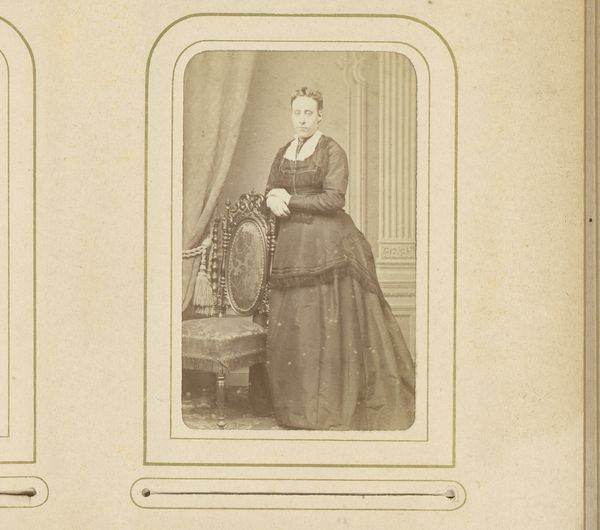
photography, gelatin-silver-print
#
portrait
#
photography
#
gelatin-silver-print
Dimensions: height 107 mm, width 62 mm
Copyright: Rijks Museum: Open Domain
Curator: This photograph, a gelatin-silver print made by Achille Ernest Mouret sometime between 1860 and 1888, is titled "Portret van een onbekende vrouw," or Portrait of an Unknown Woman. Editor: The stillness of it is what strikes me initially—a quiet formality almost, but there’s something more subdued in her eyes, perhaps a weariness. Curator: Gelatin-silver prints like this one allowed for mass production, transforming photography from an elite practice to something far more accessible to the middle classes. The rise of the carte de visite and cabinet cards created new markets for portrait studios. Editor: Absolutely. These photographic formats democratized representation but also solidified certain modes of seeing. This woman's presentation adheres to codes of bourgeois respectability: the dark dress, the restrained posture. But what were the labor conditions within Mouret's studio that allowed this image to be created, and how might it reflect gendered expectations and access? Curator: Studios like Mouret's employed many people—photographers, developers, printers, retouchers, even background painters, mostly working in relative obscurity. Think of all the hands and processes involved in presenting what seems like a simple portrait! There’s also the cost of materials—chemicals, paper, the upkeep of equipment. And how did the subject perceive herself within this complex process, a system deeply interwoven with evolving economic structures? Editor: Indeed, it's important to recognize that while photography provided opportunities for self-expression and identity formation, those opportunities were far from evenly distributed. Consider this woman's class and its dictates regarding female roles—how her gaze may or may not conform to such prescriptions within the Victorian era. Who had agency over its final construction as an image? Curator: Her dress is fascinating too. The construction of the puffed sleeves and skirt surely consumed a vast amount of labor, indicative of the values placed on visible wealth, if also physical limitations imposed by such wear, wouldn’t you say? Editor: Exactly, and unpacking such constructions can teach us volumes about not just social hierarchy but also gender roles from the period, their performance within a constructed fantasy or a constrained actuality. Curator: By examining photographic prints like this as objects embedded in particular economies, technologies, and labor practices, we can appreciate how they not only reflected but shaped society itself. Editor: This unknown woman prompts reflection, for me, on broader patterns of representation, inequality, and resilience, challenging us to question the social implications of the seemingly objective photographic record.
Comments
No comments
Be the first to comment and join the conversation on the ultimate creative platform.
